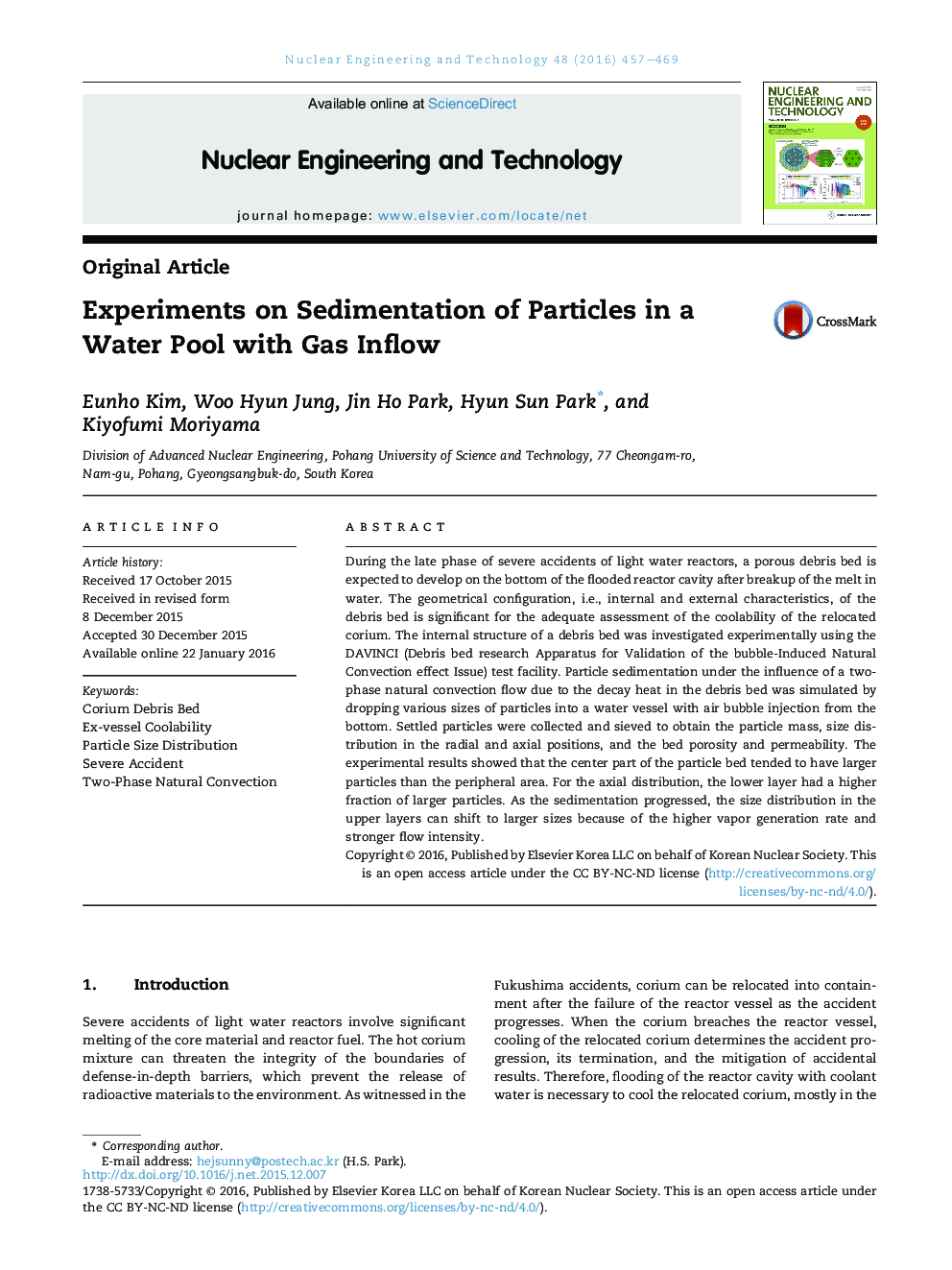| Article ID | Journal | Published Year | Pages | File Type |
|---|---|---|---|---|
| 1739894 | Nuclear Engineering and Technology | 2016 | 13 Pages |
During the late phase of severe accidents of light water reactors, a porous debris bed is expected to develop on the bottom of the flooded reactor cavity after breakup of the melt in water. The geometrical configuration, i.e., internal and external characteristics, of the debris bed is significant for the adequate assessment of the coolability of the relocated corium. The internal structure of a debris bed was investigated experimentally using the DAVINCI (Debris bed research Apparatus for Validation of the bubble-Induced Natural Convection effect Issue) test facility. Particle sedimentation under the influence of a two-phase natural convection flow due to the decay heat in the debris bed was simulated by dropping various sizes of particles into a water vessel with air bubble injection from the bottom. Settled particles were collected and sieved to obtain the particle mass, size distribution in the radial and axial positions, and the bed porosity and permeability. The experimental results showed that the center part of the particle bed tended to have larger particles than the peripheral area. For the axial distribution, the lower layer had a higher fraction of larger particles. As the sedimentation progressed, the size distribution in the upper layers can shift to larger sizes because of the higher vapor generation rate and stronger flow intensity.
